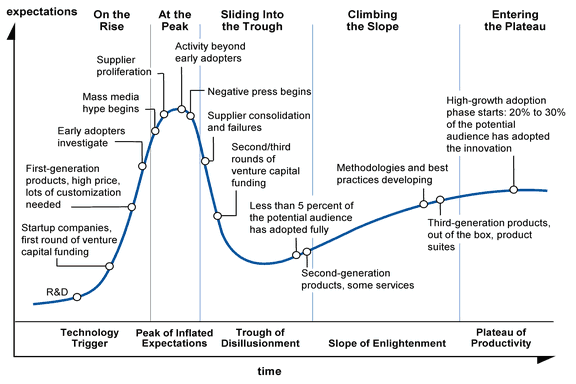

Understanding this behaviour can help guide the delivery of the technology strategy and projects more effectively throughout your organisation.įigure 1 A comparison of human change models Despite what the curve may suggest, how technology moves through that cycle has less to do with technology maturity and with all reality, everything to do with how we behave as humans. If hype exceeds capability then it sits on the left, and if it matches it, then it sits on the right. How items are placed on the curve then becomes in theory a measure of visible hype vs engineering capability over time. If you look into Gartner’s own explanation, the cycle comes as a blend of two curves: to the left is all about social hype, and the right, engineering capability. How and where Gartner places technologies on the cycle is kept a closely guarded secret, but with a little understanding of what’s going on behind the scenes, it would not be hard to guess. In 1995, Gartner started publishing Hype Cycles across a number of different technologies, and now publishes over 90 hype cycles for just about every market segment Gartner covers. The reality is of course very different with decades if not centuries of research showing very clear behavioural patterns among society, including the way we adopt and accept technology. In that message lies a very good point: Humans are an irrational, emotional bunch who somehow seem to think each of whom behave in a completely unique way.
/filters:no_upscale()/news/2012/08/Gartner-Hype-Cycle-2012/en/resources/hype1.png)

For the most part, we would just nod and smile, perhaps with a little eye rolling action. My dad has a saying he regales us with from time to time: “Human beings are funny things, I’m glad I’m not one…”.


 0 kommentar(er)
0 kommentar(er)
